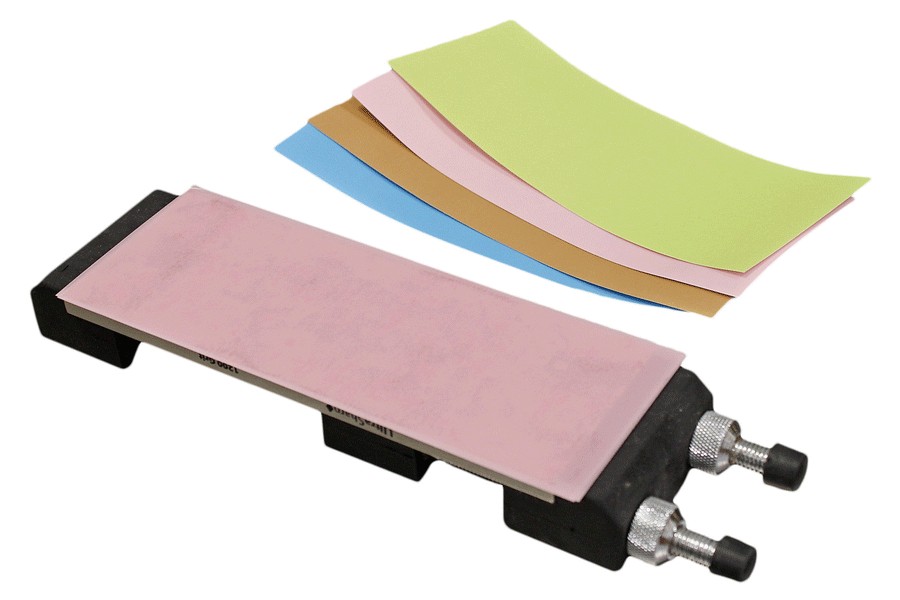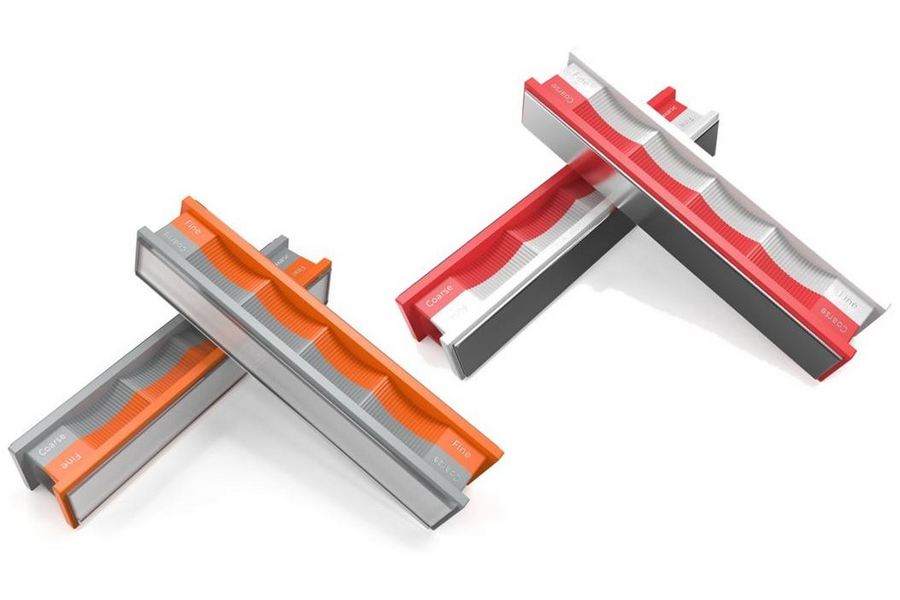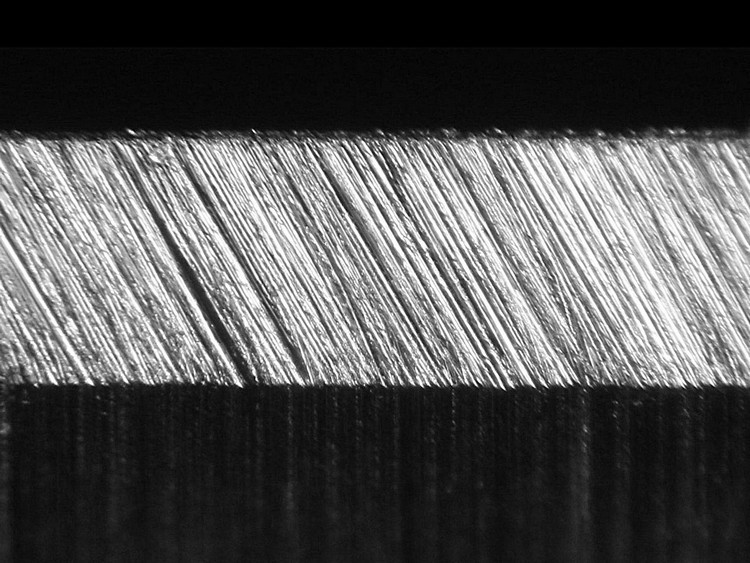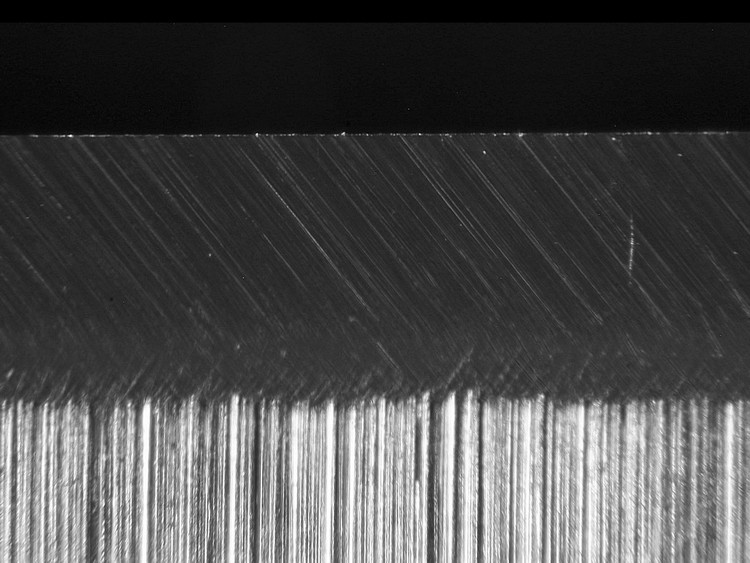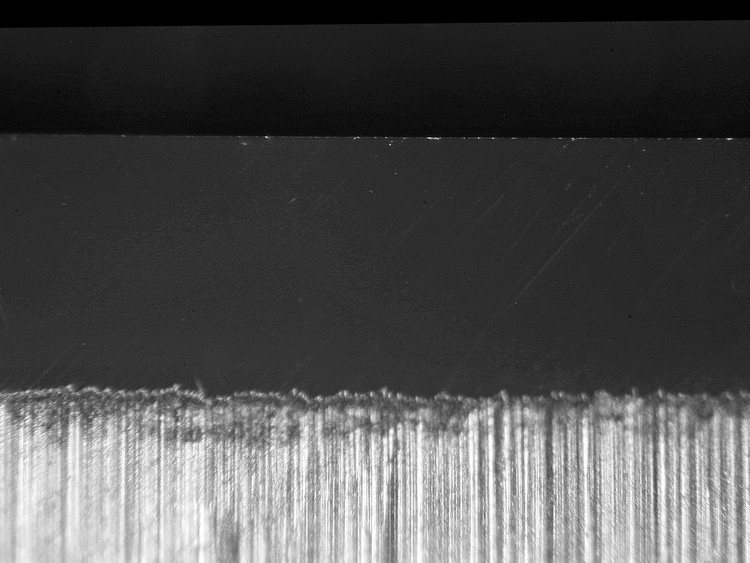How to Use Lapping Film for Sharpening
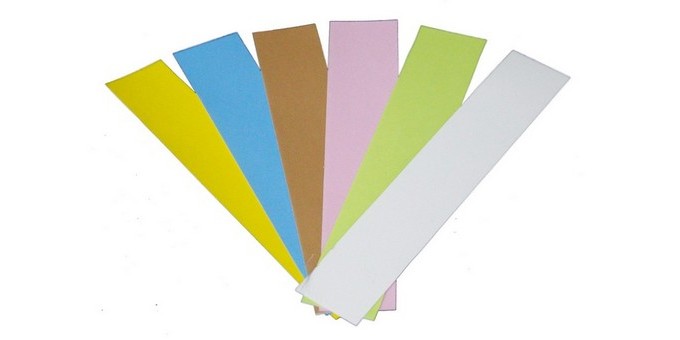
How to Sharpen with Lapping Film.
Lapping film is one of the best ways to get an extremely sharp edge on knives and tools. And it is very easy to use.
3M Lapping Film gives you unmatched consistency for sharpening at very fine grit levels. They provide a cleaner and faster alternative to diamond slurries or strops. In fact, there is no other abrasive we have tested that produces swarf as fast as lapping film at these grit levels.
Lapping film is available in six grits ranging from 12 to .3 microns.
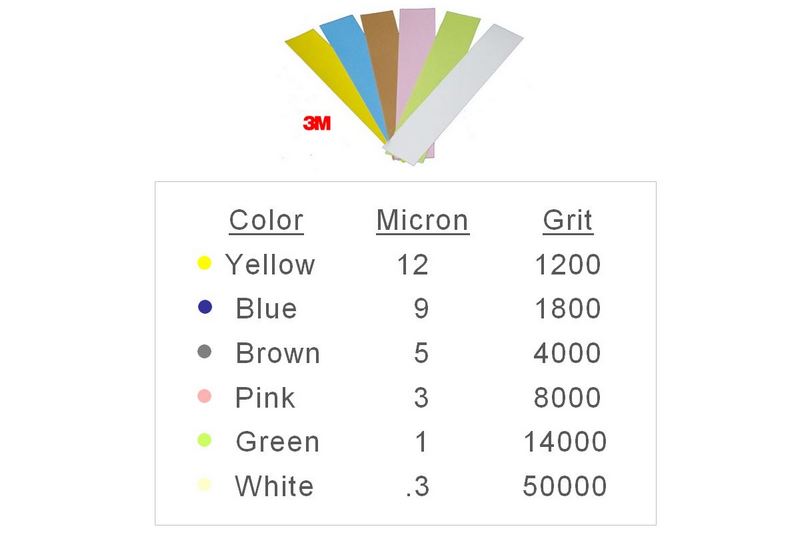 Lapping film is very easy to use. The films are color-coded so it is easy to tell the grits apart plus it's adhesive backed. You simply peel off some film and stick it to the surface of your choice.
Lapping film is very easy to use. The films are color-coded so it is easy to tell the grits apart plus it's adhesive backed. You simply peel off some film and stick it to the surface of your choice.
You can use lapping film freehand by applying it to a hard surface. Any hard, flat surface will work. I've used any one of my sharpening stones, plexiglass, and a piece of MDO board. I often just stick it to the back of one of my diamond bench stones.
It can also be used on one of the popular sharpeners like the Wicked Edge, KME or Edge Pro. All these companies provide inexpensive glass or aluminum blanks for their systems that the lapping film attaches to.
To see the Lapping Film for the Wicked Edge click here - Wicked Edge Lapping Film or sheets for freehand sharpening here - Lapping Film Sheets
How to Use Lapping Film
First use a 600 grit diamond stone to remove any nicks, chips or imperfections from the blade. Then sharpen the edge as you normally would until you have a good edge at around 1200 grit.
Put 3-4 drops of lubricant on the film making sure it is spread evenly across the film. I use Krud Kutter as a lubricant but glass cleaner or any all-purpose cleaner works better than nothing.
Next, using a back stroke as you would when stropping, take 50-75 strokes on each side of the blade. Continue until you have reached the desired level of sharpness for that grit. (The number of strokes will vary depending on the hardness of the knife and the angle you are using.)
Continue to work your way through the grits starting with the coarsest and ending with the finest.
To get the most out of each strip it is important to keep them clean and lubricated. Because you're using such fine grits they do tend to clog. Keeping the lapping film clean nearly doubles the life of the film as opposed to not cleaning or lubricating them.
To clean lapping film put a couple of drops of Krud Kutter on the film. Work it around with your finger so the swarf is suspended in the Krud Kutter and then wipe it clean with a lint free cloth. It is that easy and greatly extends the life of each strip. (Krud Kutter is great but any all-purpose cleaner will work.)
When you're ready to move up to a different grit clean the piece you were using before putting it away for later use. Save the used strips for later use by sticking them to any clean, non-porus surface like a piece of plexiglass or any piece of hard plastic until you're ready to use it again.
Our extensive testing shows you can get about 1500 passes over the steel out of each strip. It typically takes 75 passes on each side of the blade before you can move up in grit so you get about 10 knives out of each piece of lapping film.
3M Lapping Films are engineered to get you ridiculously sharp edges in fewer passes.
The are three reasons 3M lapping film works so well:
1. They are made from carefully graded aluminum oxide. The grains are almost perfectly even in size.
2. The even distribution of the grains on the film. The grains are more evenly distributed across the surface than any other sharpening abrasive we have tested.
3. Aluminum Oxide is one of the hardest sharpening abrasives available. It is much harder than any steel used for making knives and tools. [1][2][3]
I have studied most sharpening abrasives under high magnification and nothing matches 3M Lapping Film for even grain size and even distribution of the grains.
This almost perfectly even grain size and the even distribution of the grains makes 3M lapping film one of the fastest and best sharpening abrasives I have ever used.
If you've never tried lapping film for sharpening, I strongly suggest you do. The results are amazing!
Here is a link to more magnified knife edges. Magnified Knife Edges
To see the Wicked Edge Lapping Film page click here - Wicked Edge Lapping Film
To buy it in sheets for freehand sharpening click here - Lapping Film Sheets
To read more articles click here Sharpening Articles
We always welcome feedback about our articles. For feedback, suggestions or comments please Contact Us.
References:
1. A.G. Russell Steel Chart
2. A.G. Russell Non-Stainless Steel Chart
3. Engineering Fundamentals - Mohs (HM) to Rockwell (HRA Converter
Lapping film is one of the best ways to get an extremely sharp edge on knives and tools. And it is very easy to use.
3M Lapping Film gives you unmatched consistency for sharpening at very fine grit levels. They provide a cleaner and faster alternative to diamond slurries or strops. In fact, there is no other abrasive we have tested that produces swarf as fast as lapping film at these grit levels.
Lapping film is available in six grits ranging from 12 to .3 microns.
Lapping Film Grit Chart

You can use lapping film freehand by applying it to a hard surface. Any hard, flat surface will work. I've used any one of my sharpening stones, plexiglass, and a piece of MDO board. I often just stick it to the back of one of my diamond bench stones.
It can also be used on one of the popular sharpeners like the Wicked Edge, KME or Edge Pro. All these companies provide inexpensive glass or aluminum blanks for their systems that the lapping film attaches to.
To see the Lapping Film for the Wicked Edge click here - Wicked Edge Lapping Film or sheets for freehand sharpening here - Lapping Film Sheets
How to Use Lapping Film
First use a 600 grit diamond stone to remove any nicks, chips or imperfections from the blade. Then sharpen the edge as you normally would until you have a good edge at around 1200 grit.
Put 3-4 drops of lubricant on the film making sure it is spread evenly across the film. I use Krud Kutter as a lubricant but glass cleaner or any all-purpose cleaner works better than nothing.
Next, using a back stroke as you would when stropping, take 50-75 strokes on each side of the blade. Continue until you have reached the desired level of sharpness for that grit. (The number of strokes will vary depending on the hardness of the knife and the angle you are using.)
Continue to work your way through the grits starting with the coarsest and ending with the finest.
To get the most out of each strip it is important to keep them clean and lubricated. Because you're using such fine grits they do tend to clog. Keeping the lapping film clean nearly doubles the life of the film as opposed to not cleaning or lubricating them.
To clean lapping film put a couple of drops of Krud Kutter on the film. Work it around with your finger so the swarf is suspended in the Krud Kutter and then wipe it clean with a lint free cloth. It is that easy and greatly extends the life of each strip. (Krud Kutter is great but any all-purpose cleaner will work.)
When you're ready to move up to a different grit clean the piece you were using before putting it away for later use. Save the used strips for later use by sticking them to any clean, non-porus surface like a piece of plexiglass or any piece of hard plastic until you're ready to use it again.
Our extensive testing shows you can get about 1500 passes over the steel out of each strip. It typically takes 75 passes on each side of the blade before you can move up in grit so you get about 10 knives out of each piece of lapping film.
3M Lapping Films are engineered to get you ridiculously sharp edges in fewer passes.
The are three reasons 3M lapping film works so well:
1. They are made from carefully graded aluminum oxide. The grains are almost perfectly even in size.
2. The even distribution of the grains on the film. The grains are more evenly distributed across the surface than any other sharpening abrasive we have tested.
3. Aluminum Oxide is one of the hardest sharpening abrasives available. It is much harder than any steel used for making knives and tools. [1][2][3]
I have studied most sharpening abrasives under high magnification and nothing matches 3M Lapping Film for even grain size and even distribution of the grains.
This almost perfectly even grain size and the even distribution of the grains makes 3M lapping film one of the fastest and best sharpening abrasives I have ever used.
If you've never tried lapping film for sharpening, I strongly suggest you do. The results are amazing!
Here is a link to more magnified knife edges. Magnified Knife Edges
To see the Wicked Edge Lapping Film page click here - Wicked Edge Lapping Film
To buy it in sheets for freehand sharpening click here - Lapping Film Sheets
To read more articles click here Sharpening Articles
We always welcome feedback about our articles. For feedback, suggestions or comments please Contact Us.
References:
1. A.G. Russell Steel Chart
2. A.G. Russell Non-Stainless Steel Chart
3. Engineering Fundamentals - Mohs (HM) to Rockwell (HRA Converter


